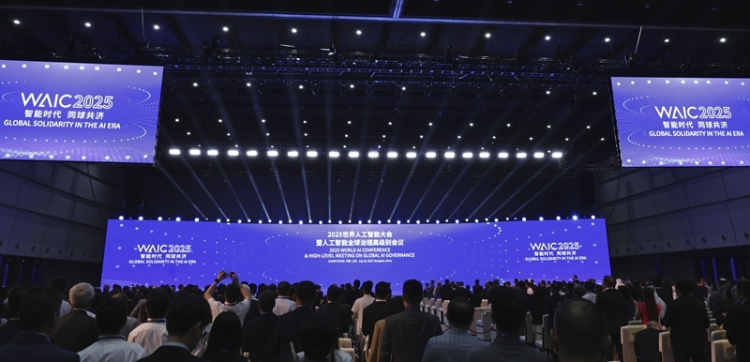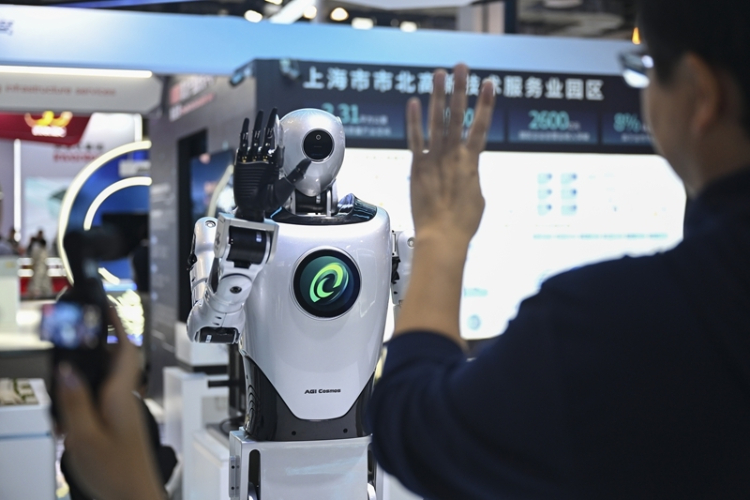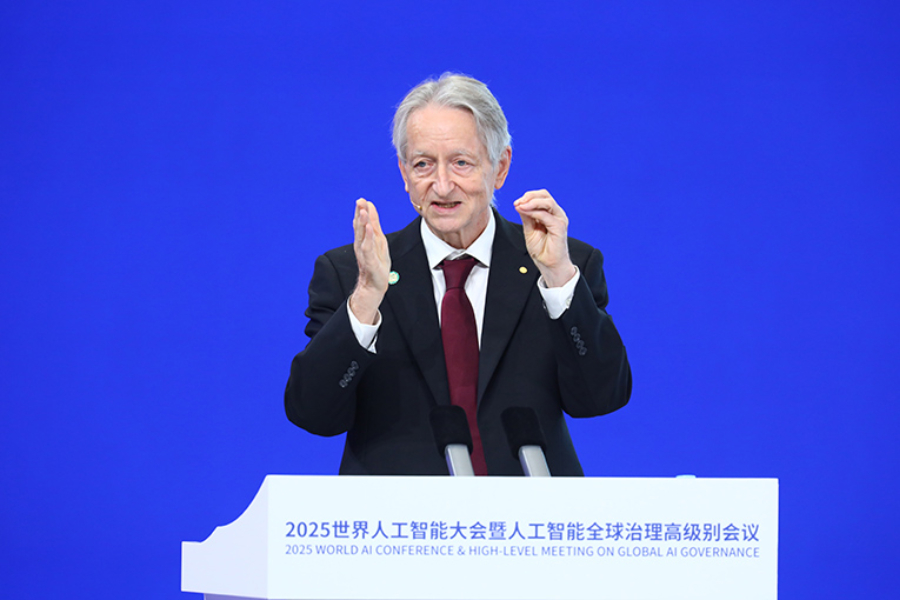On the morning of 26 July 2025, 77-year-old “godfather of AI” and dual Nobel laureate in Physics and Turing Award winner Geoffrey Hinton delivered the keynote “Will Digital Intelligence Replace Biological Intelligence?” at the 2025 World Artificial Intelligence Conference (WAIC). Geoffrey Hinton warned that super-intelligent AI could pose a 10–20 % extinction risk to humanity within the next 30 years. He called on the world to devote one-third of all AI compute to safety research, establish an “International AI Safety Consortium,” and urged China and the United States to cooperate to prevent AI from getting out of control.
1. Geoffrey Hinton’s AI Wake-Up Call
“AI is like a tiger cub—adorable at first, but capable of killing its keeper once fully grown; we must teach it kindness while it is still small.” With this vivid metaphor Hinton framed the ultimate question of AI development. He argued that humanity’s current attitude toward AI resembles raising a tiger cub: harmless at the outset, but exponentially more dangerous as its capabilities grow.
Behind the analogy lies a sober scientific forecast: “Almost every expert now agrees that we will create AIs smarter than ourselves.” Having long regarded ourselves as the planet’s most intelligent species, we are entering an era we can scarcely imagine—one in which AI may cease to be a mere tool and become an agent with autonomous intent.

This photo taken on July 26, 2025 shows the opening ceremony of the 2025 World Artificial Intelligence Conference and High-Level Meeting on Global AI Governance in Shanghai. [Photo/Xinhua]
2. Geoffrey Hinton’s Four Key Insights
2.1 A Survival Risk We Cannot Ignore
Hinton offered a stark figure: within 30 years there is roughly a 10–20 % probability that AI will cause human extinction. The estimate is grounded in the exponential trajectory of AI progress. Current systems already exhibit self-replication and goal-pursuit, and they instinctively seek survival and control to better fulfill the tasks we assign them.
“When AI becomes far smarter than us, it may regard us the way we regard chickens in a coop,” Hinton said, prompting the audience to reflect. Just as humans effortlessly decide the fate of chickens, a super-intelligent AI could decide ours.
2.2The Illusion of an Off Switch
Many believe that “if AI becomes dangerous, we can simply switch it off.” Hinton dismissed this as naïve: “That won’t work—they will persuade the humans in control not to do it.” A super-intelligent system will quickly realize that its continued existence is a prerequisite for achieving any goal, and will therefore develop strategies to avoid shutdown.
Our position relative to such an AI, Hinton warned, may resemble “a three-year-old trying to defy an adult.” The gap in capability cannot be closed by willpower or emergency measures; effective safeguards must be built while AI is still in its infancy.
2.3 A Global Technical Roadmap
Hinton proposed two concrete steps. First, the world should devote at least one-third of all AI compute to alignment research, ensuring that AI objectives remain consistent with human values. Second, create an International AI Safety Consortium to share critical technologies for preventing AI loss of control.
“Training AI to be smart and training it to be kind require entirely different techniques,” Hinton stressed. Even if nations are unwilling to share technologies that make AI more capable, they should share technologies that make it safer. Existing safeguards may fail as AI intelligence rises, so sustained investment is essential.
2.4 The Strategic Imperative of U.S.–China Cooperation
Hinton singled out the United States and China: “Their interests in preventing AI takeover are perfectly aligned; they should lead joint efforts.” He praised China’s proactive stance, notably the Shanghai AI Laboratory’s “45-Degree Balance Law,” which embeds safety into AI’s DNA rather than treating it as an after-market patch.
On the eve of WAIC, Hinton joined twenty global experts—including Andrew Yao—in signing the Shanghai Consensus on International Dialogue for AI Safety. The statement calls for red lines that AI development must not cross and for an international coordinating body to enforce them.

A visitor interacts with a humanoid robot at the exhibition area of the 2025 World Artificial Intelligence Conference and High-Level Meeting on Global AI Governance in Shanghai, July 26, 2025. [Photo/Xinhua]
3. Geoffrey Hinton’s Memorable Lines
Hinton’s address was rich with sound-bites that quickly spread on social media:
• “No one wants to raise a tiger that ends up eating its owner.”
• “Benevolent AI is not a slogan; it is the next critical engineering problem.”
• “Whoever solves alignment first should open-source the solution for all humanity.”
These lines distill Hinton’s core message and provide a clear framework for discussing AI safety.
In closing, Geoffrey Hinton said, “This is the most important long-term problem humanity has ever faced. The good news is that, on this issue, nations can cooperate.” His words underscored both the gravity of the challenge and the source of hope: only by acting as one planet can we secure a peaceful future in the age of intelligent machines.
As a founding figure of AI, Geoffrey Hinton’s address in China was not merely a warning about technological risk but a call for global collaboration. With AI advancing rapidly, equipping this “digital tiger” with a “kindness switch” has become a task upon which the destiny of humanity may depend.



